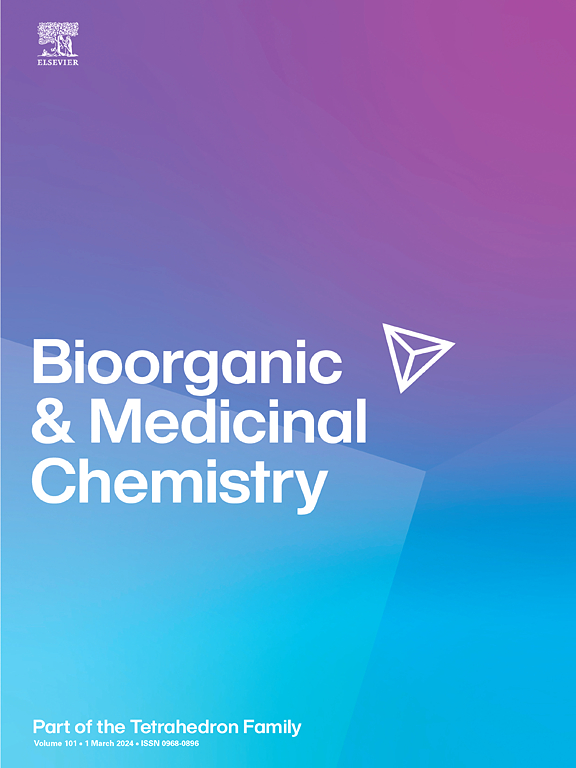Machine learning-driven QSAR modeling combined with molecular dynamics suggests high-affinity CD33-targeting peptides for leukemia therapy
IF 3
3区 医学
Q2 BIOCHEMISTRY & MOLECULAR BIOLOGY
引用次数: 0
Abstract
Despite advances in antibody-based therapies for leukemia, significant limitations persist, including immunogenicity, toxicity, and resistance development. To address these challenges, we pursued an innovative peptide-based targeting strategy against CD33, a well-validated surface marker in leukemia. This study establishes a comprehensive pipeline integrating computational design with experimental validation to develop novel CD33-targeting peptides with optimal therapeutic properties.
Our methodology combined machine learning-based QSAR modeling (achieving R2 = 0.93) with molecular docking and 100-ns molecular dynamics simulations to predict and validate peptide-CD33 interactions. From this pipeline, we identified two lead peptides A3K2L2 (AKAKLAL-NH₂) and K4I3 (KKKKIII-NH₂), demonstrating exceptional binding affinities (−146.11 and − 108.08 kcal/mol, respectively) and complex stability (RMSD 0.25–0.35 nm).
Experimental characterization revealed these peptides form stable reverse β-sheet structures and self-assembling nanostructures while maintaining remarkable selectivity, showing potent cytotoxicity against K-562 cells (IC₅₀ 60–90 μM) with minimal effects on normal PBMCs. Additional safety profiling confirmed low hemolytic activity (<5 %) and favorable induction of cancer cell death through combined apoptotic and necrotic pathways.
These findings represent a significant advancement in targeted leukemia therapy, offering peptide-based alternatives that overcome key limitations of current antibody treatments. Our integrated design platform provides a generalizable framework for developing receptor-specific anticancer peptides, with particular promise for hematological malignancies where target specificity is paramount.

机器学习驱动的QSAR模型结合分子动力学提示高亲和力cd33靶向肽用于白血病治疗
尽管基于抗体的白血病治疗方法取得了进展,但仍然存在显著的局限性,包括免疫原性、毒性和耐药性的发展。为了应对这些挑战,我们寻求一种创新的基于肽的靶向策略,靶向CD33,这是一种经过验证的白血病表面标志物。本研究建立了一个综合计算设计和实验验证的管道,以开发具有最佳治疗特性的新型cd33靶向肽。我们的方法将基于机器学习的QSAR建模(实现R2 = 0.93)与分子对接和100-ns分子动力学模拟相结合,以预测和验证肽- cd33相互作用。从这个管道中,我们鉴定了两个先导肽A3K2L2 (AKAKLAL-NH₂)和K4I3 (KKKKIII-NH₂),表现出优异的结合亲和力(分别为- 146.11和- 108.08 kcal/mol)和配合物稳定性(RMSD 0.25-0.35 nm)。实验表征表明,这些肽形成稳定的反向β-片结构和自组装纳米结构,同时保持显着的选择性,对K-562细胞(IC₅₀60-90 μM)显示出强大的细胞毒性,对正常pbmc的影响最小。额外的安全性分析证实了低溶血活性(5%)和通过凋亡和坏死联合途径有利地诱导癌细胞死亡。这些发现代表了靶向白血病治疗的重大进展,提供了基于肽的替代方案,克服了当前抗体治疗的关键局限性。我们的集成设计平台为开发受体特异性抗癌肽提供了一个可推广的框架,特别是在靶向特异性至关重要的血液系统恶性肿瘤方面。
本文章由计算机程序翻译,如有差异,请以英文原文为准。
求助全文
约1分钟内获得全文
求助全文
来源期刊

Bioorganic & Medicinal Chemistry
医学-生化与分子生物学
CiteScore
6.80
自引率
2.90%
发文量
413
审稿时长
17 days
期刊介绍:
Bioorganic & Medicinal Chemistry provides an international forum for the publication of full original research papers and critical reviews on molecular interactions in key biological targets such as receptors, channels, enzymes, nucleotides, lipids and saccharides.
The aim of the journal is to promote a better understanding at the molecular level of life processes, and living organisms, as well as the interaction of these with chemical agents. A special feature will be that colour illustrations will be reproduced at no charge to the author, provided that the Editor agrees that colour is essential to the information content of the illustration in question.
 求助内容:
求助内容: 应助结果提醒方式:
应助结果提醒方式:


